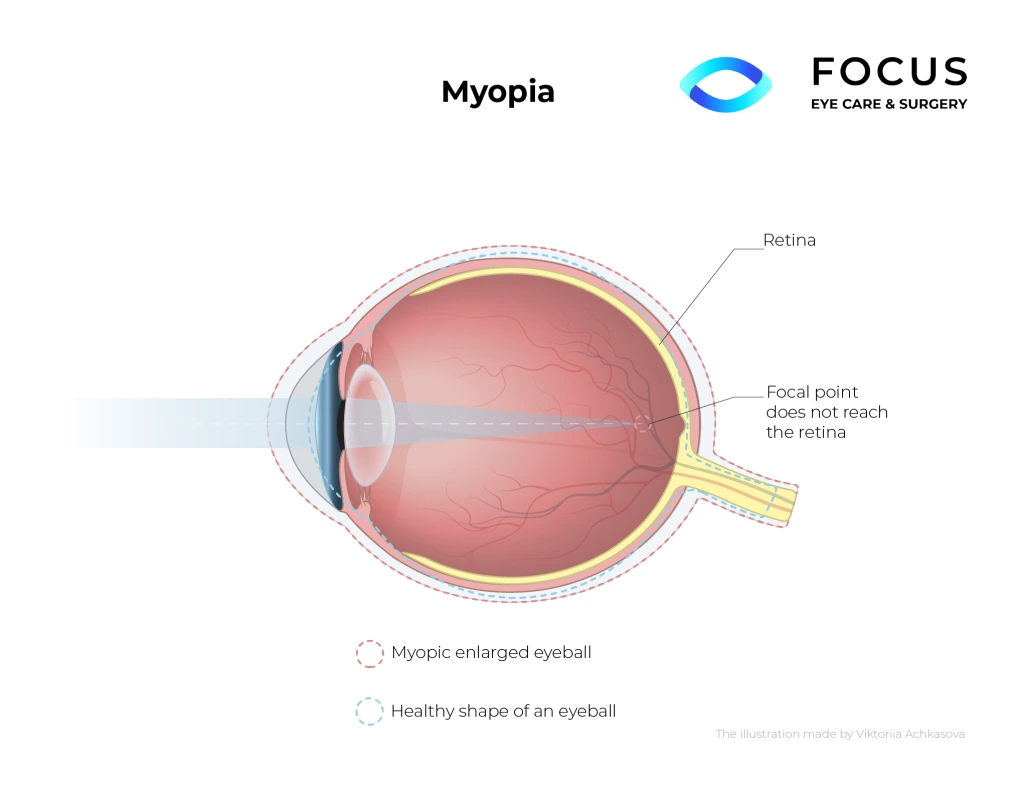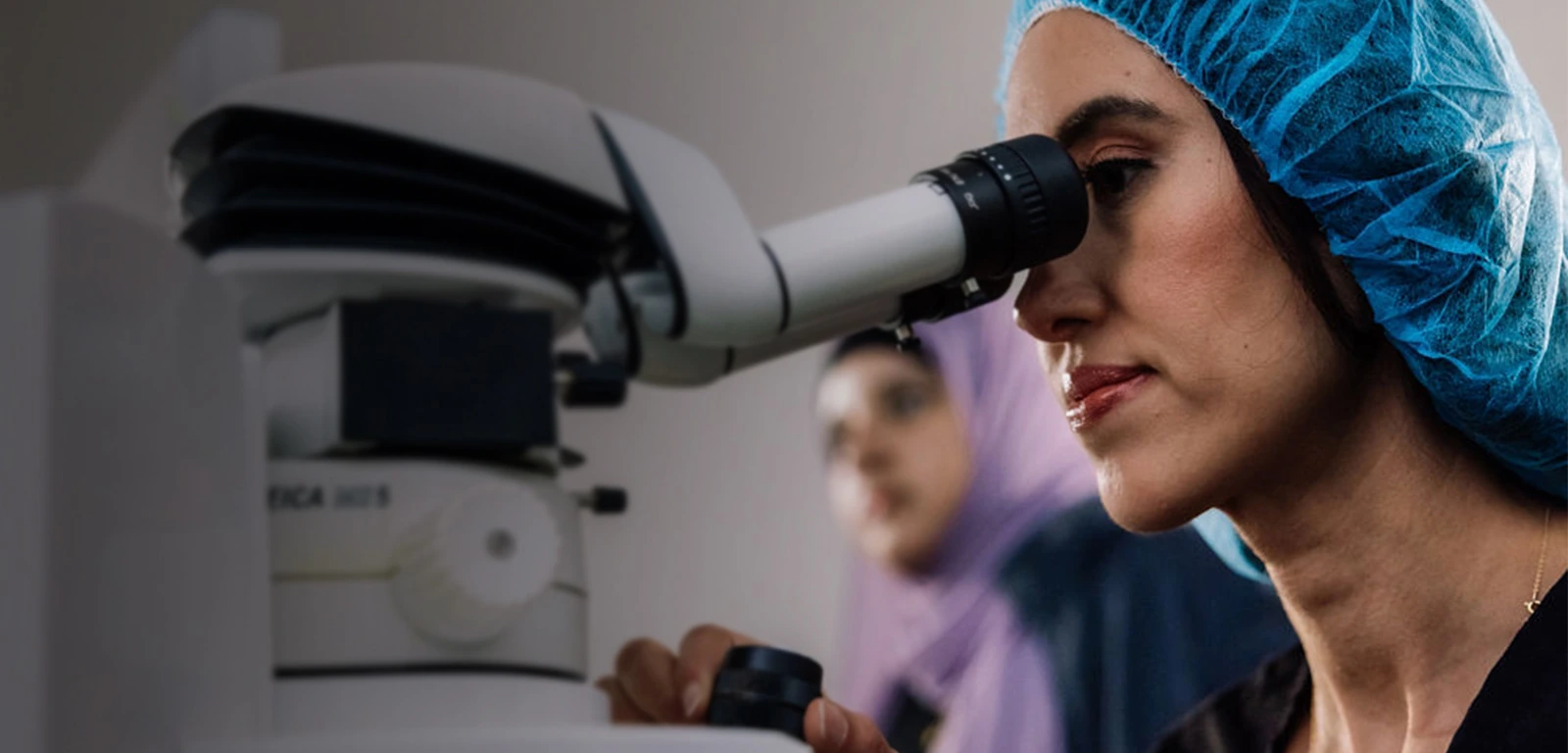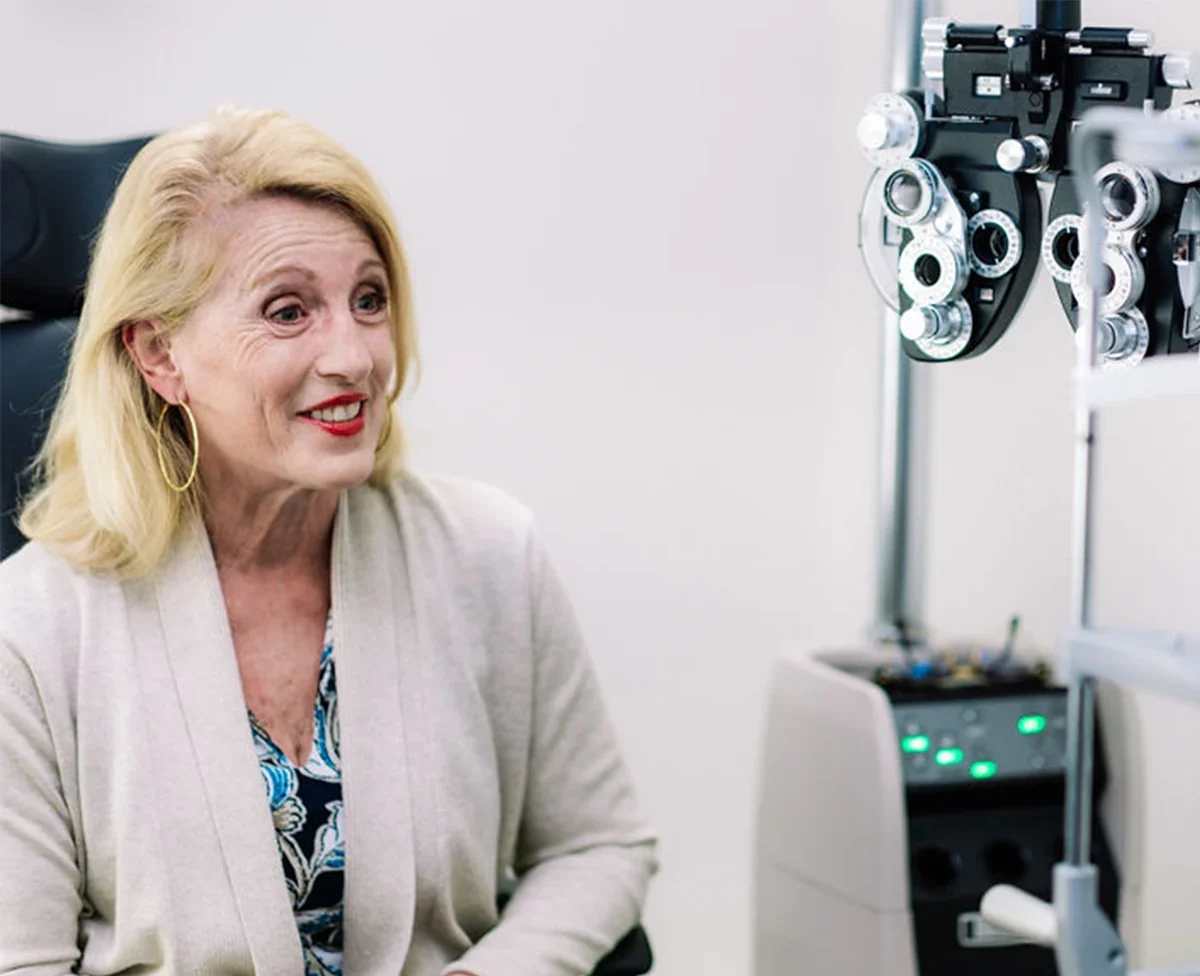
Myopia
Myopia
Does Your Myopia Make it Difficult to See Signs Clearly?
Myopia, or nearsightedness, is an error in how the eyes bend light, causing distant objects to look blurred. For the eyes to see clearly at any distance, incoming light rays must be focused on a single point on the light-sensitive layer at the back of the eyes, or the retina. Nearsightedness occurs because light rays are focused in front of the retina, instead of on it.
Schedule a consultation with us today to get a comprehensive eye exam. Our New York eye specialist will conduct a thorough evaluation and develop a treatment plan with you so you can enjoy outdoor life more.



Now you have one more reason to spend more time outdoors: to prevent myopia.
Myopia has become a common condition among Americans. According to the National Eye Institute, about 40% of Americans have myopia, a significant increase from 25% in the 1970s. The trend is going upward such that myopia has become a concerning national health issue.
Around the world, people appear to be getting more nearsighted, too. Projections indicate that myopia may occur in one out of two people by 2050.
Statistics may be grim, but your vision doesn’t have to be. At Focus Eye Care & Surgery, our New York eye specialist, Dr. Neelofar Ghaznawi, is a board-certified cornea surgeon highly experienced in performing refractive surgery. She is a member of the American Society of Cataract and Refractive Surgeons.
What Causes Myopia?
Myopia is caused by how the eye is structured, which in turn affect its refractive ability. This is why myopia is called a refractive error of the eye, not a disease.
Myopia happens when:
- The eyeball, from front to back, is longer than normal.
- The shape of the cornea, or the clear surface layer of the eyes, is too curved.
- The focusing power of the natural lens is too strong. It’s not able to easily flatten to accommodate viewing distant objects.
Myopia may be passed on from parent to children. The condition starts to develop in childhood, usually from ages 8 to 12. In adolescence, myopia may get worse, and it can’t be outgrown (unlike hyperopia or farsightedness) as the child enters young adulthood.
Some studies indicate that not enough time spent outside during childhood and too much near work may bring out myopia in some people.
This is why it’s essential for children to get a comprehensive eye exam early. The goal is to promptly correct myopia and avoid complications. Schedule a consultation with Focus Eye Care & Surgery today to find out how you can enjoy clearer distance vision and stop myopia from getting worse.
How is Myopia Diagnosed?
Visual acuity tests are the first line of diagnostic tool to check if you have normal vision. The eye doctor will have you read a series of letters on a chart placed at the end of the wall. This will help determine if your vision is normal or not.
If the eye specialist suspects you have myopia, he or she may use specialized tools to achieve accurate diagnosis.
A retinoscope is used to shine a special light inside your eye so the doctor can see how light bounces off your retina. A lens is placed in front of your eyes until the doctor determines each eye’s refractive error.
Looking like a space-visor, a phoropter works similarly but faster, as it checks both eyes at the same time. This enables the eye doctor to evaluate your binocular vision (how your eyes work together) and eye muscle coordination.
The phoropter allows the eye specialist to determine the exact lens shape and curvature that would correct your myopia.

What are the Treatment Options for Myopia?
Prescription Eyeglasses
The simplest and safest way to correct myopia is through prescription eyeglasses or contact lenses that are concave in shape. These lenses are thinner in the center and thicker at the edges. This shape diverges light rays so distant objects can be seen clearly.
Intracorneal rings or intraocular lens (IOL) implants
Cornea surgeons may also implant “intacs” or intracorneal rings that reshape the curvature of the cornea. Or they may insert an intraocular lens (IOL) in front of your natural lens, leaving the natural lens intact. The IOL may also be implanted in place of the natural lens, with multifocal points so you are able to see clearly at any distance.
Surgery
To avoid the inconvenience of eyeglasses or contact lenses, some people opt for a more permanent solution through surgery.
As the cornea is too curved in a myopic eye, the goal of refractive surgery is to make it less steep. This is achieved by removing the flap of the cornea, taking out just the right thickness of the innermost tissue to achieve the right shape. Then the flap of the outer tissue is put back in position to heal.
FAQs About Myopia
Aside from their eyes’ inability to see distant objects clearly, people with myopia often experience: eyestrain, headaches, squinting.
Severe myopia (or high myopia) puts people at greater risk of developing cataracts and glaucoma.
High myopia may also lead to detached retina where the retina pulls away from its normal position and results in significantly reduced vision. If discovered early, retinal detachment may be remedied by surgery.
Myopia, also called nearsightedness, is a condition in which light rays do not focus on the retina and instead focus at a point behind the retina. This can occur if the eyeballs are too long or if the cornea is too curved, both of which are common growth-related anatomical aberrations. Myopia is a very common refractive error of the eye that impairs the ability to clearly visualize objects at a distance.
Myopia can be treated using concave glasses that can focus light rays to focus on the retina. Laser refractive surgery is a permanent treatment option for myopia. The most commonly performed laser refractive surgery is LASIK, but there are other surgical options such as PRK, RK, CK, and many more. Laser refractive surgery is a safe and highly successful treatment for myopia.
Although myopia itself cannot lead to blindness, severe myopia can lead to complications such as retinal detachment, macular degeneration, glaucoma, and cataracts, which can all progress to blindness if not treated in time.
No, myopia cannot be cured by eye exercises. Myopia is a refractive error that can be treated with glasses or contact lenses. The only curative treatment option for myopia is laser refractive surgery such as LASIK.
Myopia generally stops getting worse once physical growth stops, which can range anywhere between age 18 to 30. It was previously believed that myopia stops worsening around the age of 15, but multiple large-scale studies have shown that myopia can continue to worsen up to the age of 30.
Myopia occurs due to the inability of light to focus on the retina, and instead, the light focuses behind the retina. This occurs if the length of the eyeball is too long or if the cornea is too curved. When you apply pressure on your eyes, the pressure can temporarily decrease the longitudinal diameter of your eyes by displacing the fluid inside the eye. When this happens, light can focus closer to the retina, resulting in a clearer vision.
Yes, laser refractive surgery can permanently cure myopia. It is a safe procedure with a high success rate. But there are certain criteria that have to be met in order to qualify for laser refractive surgery.
While myopia continues to progress as you continue to grow, there are certain measures that can potentially prevent it from getting worse. Avoid focusing on your screen for long periods of time to avoid eye strain. Follow the 20-20-20 rule, which states that for every 20 minutes of time spent focusing on the screen, you must look away at a distance of 20 feet for 20 seconds. Wear the correct prescription glasses. Spend some time outdoors on a daily basis. Eat a healthy balanced diet rich in fruits and vegetables that contain vitamins A, B12, and D.


Are You a Candidate for
Vision Correction?
Whether you just need a general eye exam, or if you are interested in reducing or eliminating your need for glasses or contacts, our team is here to help! Contact us to book an appointment today!
The doctors at Focus Eye Care & Surgery have reviewed and approved this content.
Page Updated:


